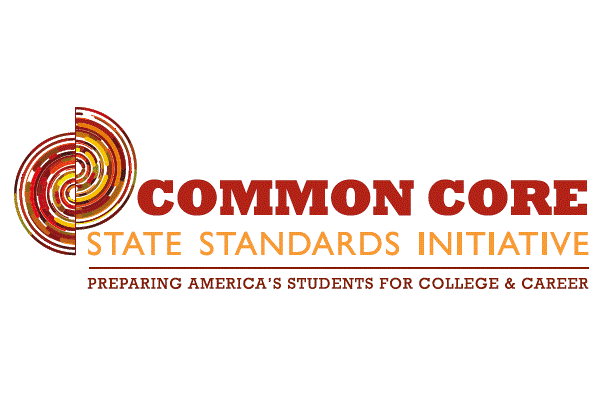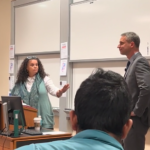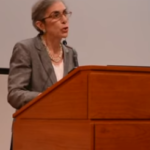Designed for Failure: The Common Core State Standards

“Standards” and “College readiness.”
Belief in the efficacy of the former and in the possibility of using them to create the latter (and an urgency manufactured through meaningless comparisons between American schools and others throughout the world) lies behind the current rush to impose the Common Core State Standards (CCSS) on American public schools. The Editorial Board of The New York Times claims:
The new Common Core learning standards, which set ambitious goals for what students should learn from one year to the next, are desperately needed in New York, where only about a third of high school students graduate with the math and English skills necessary to succeed at college.
Somehow, the Times assumes, the standards are well crafted and can meet the need.
Are they? Can they? Let’s ask a college professor (me).
Will the CCSS adequately prepare students to succeed in my Composition and Literature classrooms?
If a student comes into my classroom with curiosity piqued by broad exposure to cultural, historical and scientific information and the ability to sit down and read a book with pleasure for an hour at a time, that student will succeed in my class. That student is primed for the dynamic conversations at the heart of learning—especially in what CCSS, with its stultifying faux precision, calls English Language Arts (ELA).
Mastery of ELA is participatory, a dynamic and not a thing that can be broken down into items on a list. Communication is process and involves a speaker/writer, the vehicle of interaction and an audience. What CCSS will do is remove this dynamic, killing the process through a focus on the vehicle, the “text.” Not only does this not prepare students adequately for college success but it leaves me facing classrooms of students prepared only to be as bored by school now as they were in high school. CCSS, I believe, will make my job harder.
The CCSS ELA section is broken down into “Anchor Standards” for Reading and Writing, ten each. These are:
READING
Key Ideas and details
1 Read closely to determine what the text says explicitly and to make logical inferences from it; cite specific textual evidence when writing or speaking to support conclusions drawn from the text.
2 Determine central ideas or themes of a text and analyze their development; summarize the key supporting details and ideas.
3 Analyze how and why individuals, events, and ideas develop and interact over the course of a text.
Craft and Structure
4 Interpret words and phrases as they are used in a text, including determining technical, connotative, and figurative meanings, and analyze how specific word choices shape meaning or tone.
5 Analyze the structure of texts, including how specific sentences, paragraphs, and larger portions of the text (e.g., a section, chapter, scene, or stanza) relate to each other and the whole.
6 Assess how point of view or purpose shapes the content and style of a text.
Integration of Knowledge and Ideas
7 Integrate and evaluate content presented in diverse formats and media, including visually and quantitatively, as well as in words.
8 Delineate and evaluate the argument and specific claims in a text, including the validity of the reasoning as well as the relevance and sufficiency of the evidence.
9 Analyze how two or more texts address similar themes or topics in order to build knowledge or to compare the approaches the authors take.
Range of reading and Level of text Complexity
10 Read and comprehend complex literary and informational texts independently and proficiently.
WRITING
Text Types and Purposes
1 Write arguments to support claims in an analysis of substantive topics or texts, using valid reasoning and relevant and sufficient evidence.
2 Write informative/explanatory texts to examine and convey complex ideas and information clearly and accurately through the effective selection, organization, and analysis of content.
3 Write narratives to develop real or imagined experiences or events using effective technique, well-chosen details, and well-structured event sequences.
Production and Distribution of Writing
4 Produce clear and coherent writing in which the development, organization, and style are appropriate to task, purpose, and audience.
5 Develop and strengthen writing as needed by planning, revising, editing, rewriting, or trying a new approach.
6 Use technology, including the Internet, to produce and publish writing and to interact and collaborate with others.
Research to Build and Present Knowledge
7 Conduct short as well as more sustained research projects based on focused questions, demonstrating understanding of the subject under investigation.
8 Gather relevant information from multiple print and digital sources, assess the credibility and accuracy of each source, and integrate the information while avoiding plagiarism.
9 Draw evidence from literary or informational texts to support analysis, reflection, and research.
Range of Writing
10 Write routinely over extended time frames (time for research, reflection, and revision) and shorter time frames (a single sitting or a day or two) for a range of tasks, purposes, and audiences.
I really doubt that these were identified and crafted by contemporary scholars in Literature or Composition/Rhetoric. That is, by the professors who will actually be experiencing the “college readiness” of incoming students. Instead, they reflect the attitudes of what are known as the New Critics of the 1940s and 1950s, a group of text-centric scholars whose influence extended through the “theory” movements of the 1980s but who, today, are not a central factor in how we approach either reading or writing in college. Their “close reading” is certainly a skill we teach and use, but it does not frame the activities of our courses—as it does the ELA “Anchors” above.
“Close reading,” also, is not a gateway skill. Not only do incoming college students not need it, but it does not serve to spark interest in the texts under consideration. That has to come first: students need to want to read before they can engage in the rather precise and difficult exercise of “close reading.”
Suffice it to say that CCSS, at least in its ELA component, was not crafted by teachers experienced in the contemporary classroom, either high school or college. Its birthseems to have been in Gates Foundation back rooms or, at least, with Gates money as the midwife. Russ Walsh shows pretty definitively that it did not come from any of the constituencies most directly involved, teachers, principals, professors, college administrators, parents or students themselves. (Read Diane Ravitch’s blog, where I found the pieces linked to here, if you want to keep up with the various commentaries on CCSS). The New York Times, like all of the CCSS supporters, has no problem with this, but urges New York State’s governor Andrew Cuomo to continue his (mindless) support of CCSS, his attempt to ram it down the throat of the state’s schools. All CCSS supporters seem to believe that decisions about what constitutes appropriate standards, what makes a student “college ready,” and who should be in charge of instituting changes should come from “the top,” from politicians and the foundations that fund them.
They are wrong.
Education policy only works when it arises from those who must institute it and from those most directly affected. In the case of CCSS, college faculty should have been asked to join with high-school faculty to craft a “college readiness” formula that both could buy into, that would give high schools appropriate standards to use as goals and colleges a firm starting point for easy embarkation onto undergraduate education pathways. This would then be presented to administrators, parents and students and revised to reflect their input.
Any other method will ultimately fail—as CCSS is already starting to do.
[Editor’s note: This article is reprinted from the Academia Blog with the author’s permission.]




